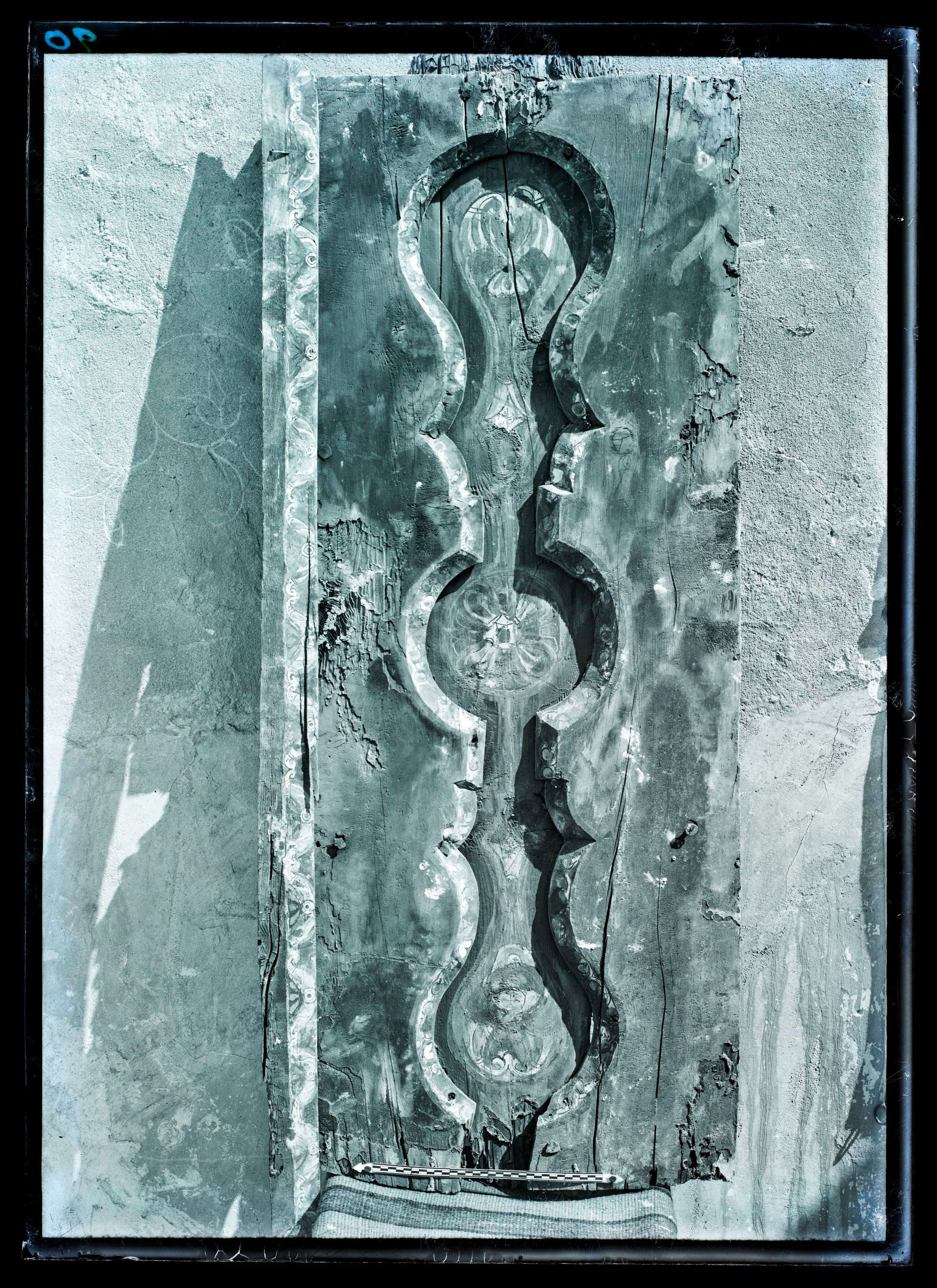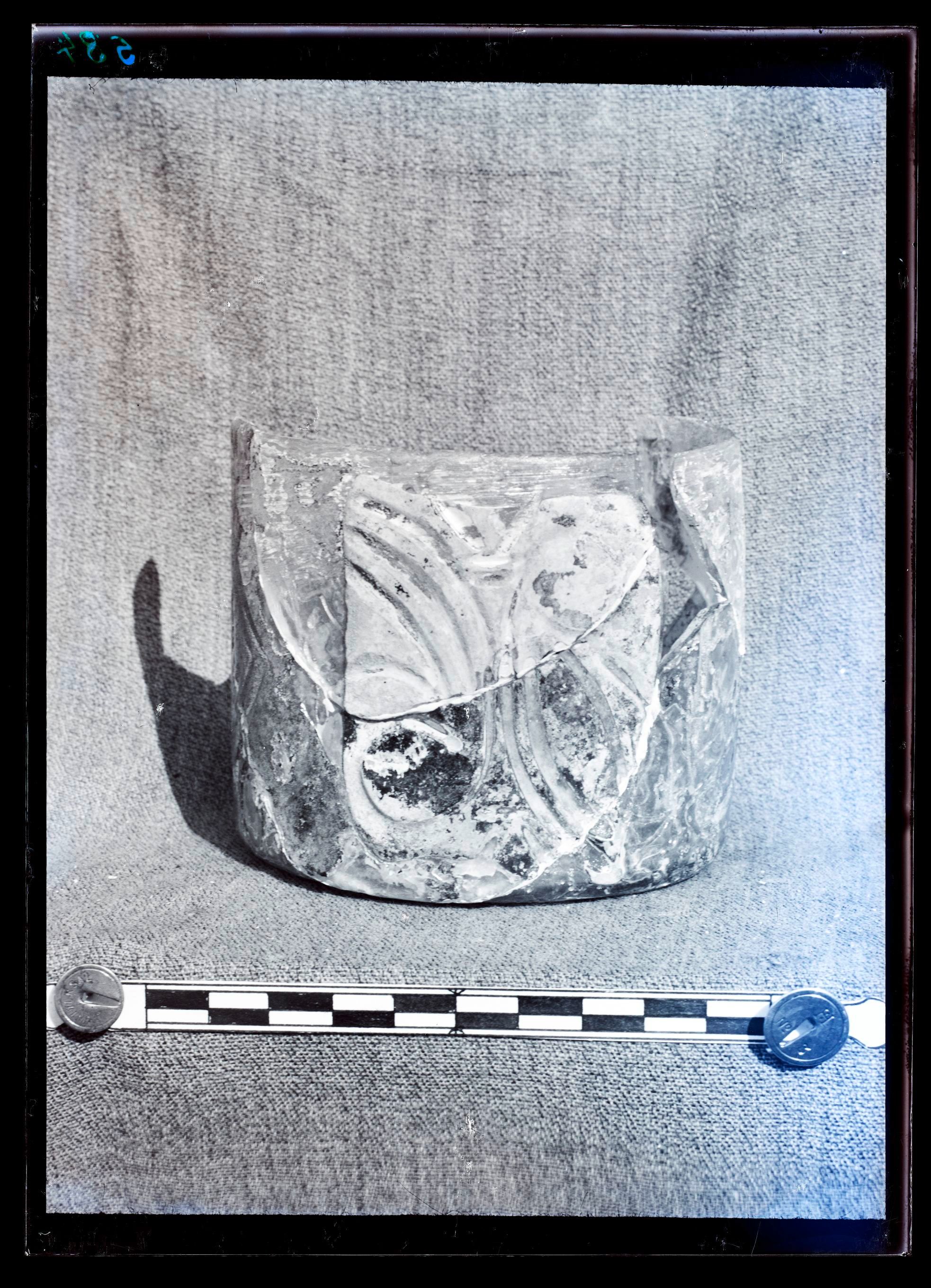Samarra Revisited
Over the past year, the Museum of Islamic Art has digitalised the glass and plastic negatives and diapositives from the two excavation campaigns by the museum in Samarra (today: Iraq) in 1911-13.
In the Samarra Revisited exhibition, all of the 1500 or so preserved photographs have now been made accessible for the first time. Even the museum employees themselves were not fully aware of the portfolio.
This led to the idea of asking current and former employees to take a closer look into the digital reproductions. 24 participants chose five photographs from Samarra which touched on their areas of work. You can find each of their "favourite photos" with comments as a digital print in the exhibition. All the other digital reproductions chosen, and the reasons for their choice, are available in the media station.
This selection shows the wide spectrum of possible uses for excavation photographs: they help archaeologists and provenance researchers to locate sites - RESEARCH. They show that excavation photographers also endeavoured in the past to enable a comparison of their photographs with the originals - COMPARE. As the photographed site situations become lost forever as a result of the excavation work, the significance of photography must not be underestimated! However, the photos also act as links to current social discourses - QUESTIONING. They delight and inspire - JOY. Finally, the photos shown here document a formidable site of Islamic archaeology with a charm and appeal that has not been lost today - LOCATE.
JOHANNES KRAMER, PHOTOGRAPHER
"Photography serves as an image of reality. Landscapes and ornaments can be seen through structures and layers overlap. A picture emerges - from surfaces to spaces, from abstract to concrete - with many things to be discovered within."
THE CHARM OF ANALOGUES
"The aim of museum photography is usually to depict an object in high technical and aesthetic quality. Materials, surfaces and shapes should be as clear and visible as possible. My choice of pictures here is based on other aspects: the charm of technical weaknesses, photographic errors, changes and notable features of the analogue materials. New images emerge as a result of time or by sheer accident, scratches and fingerprints, bacterial infestation or double exposure."
JUTTA MARIA SCHWED, RESTORER
"This photo shows one of my favourite objects, an incredibly large wooden object which is also very rare. The illumination in the glistening sunlight in Samarra emphasises its fragility far more clearly than any modern light photo could."
FRAGILE WONDERS
"The restoration and presentation of a historic reconstruction of the niche wall of a private home, on the occasion of the museum's 100-year anniversary in 2004, made me realise how fragile the magnificent stucco panel was. One of the fascinating excavation photos shows the wall in place, with the aid of a helper. And the treasure of the original coloured frame on the wood fragments is still a wonder for me, and waits to be discovered, hoping for a detailed art technology investigation of its own."
SARA BEUSTER, RESTORER
"Dear old Abbasid flashed glass cup, how are you? How are your extensions and joints? How is the light and the atmosphere around you? Are you in good company? I've got to visit you again right now!"
THE RESTORATION OF AN ABBASID GLASS CUP WITH FLASHED DECORATION
"A critical analysis of the condition of the glass cup led to the decision to carry out some new restorative work on it. Four missing areas were extended. The extensions fit the flashed glass cup perfectly. They complete the shape without drawing attention away from it. The difference between the extension and the original is recognisable, but not disruptive or irritating in any way. The glass cup is now in a clearly legible condition and ready to be exhibited."
JACQUELINE NEUNER, DEPOT MANAGER
"I collect postcards. This is the promotional postcard of a travel agency in Passau that shows the famous spiral minaret of the Great Mosque. The card was printed in Germany and sent on a bus round trip through Italy to Munich."
LOOKING FOR NUMBERS, OR BACK TO THE BEGINNING
"In my work as a museologist, it is my job to check the objects against their inventory number and look after them in the database. If any questions about them arise, I usually go back to the source, in this case, the excavation log books of Ernst Herzfeld. These can also be viewed online and have helped me so much with classification."
MEHRAD SEPAHNIA, EXPERIMENTAL FILM MAKER
"I looked for faces in the excavation findings. I find two types particularly interesting: abstracts of geographic patterns that resemble hidden faces, and self-explanatory examples."
FACES
"I looked for faces in the excavation findings. I find two types particularly interesting: abstracts of geographic patterns that resemble hidden faces, and self-explanatory examples."



